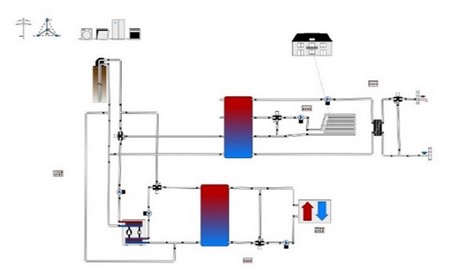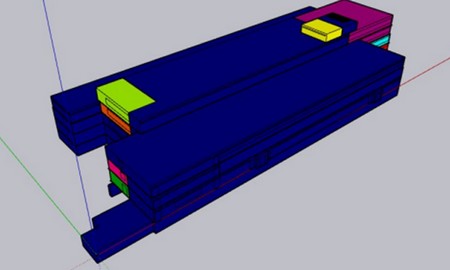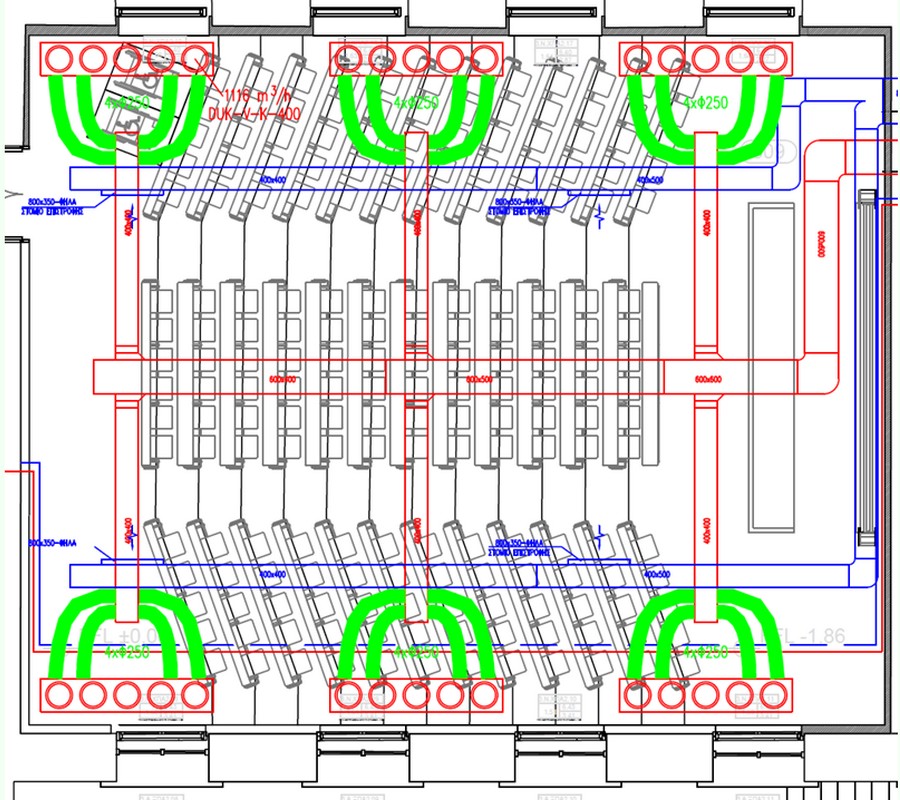Green and energy-efficient buildings
A central element of the NTUA energy strategy is the increased utilization of renewable energy sources (RES) in its infrastructure. The Polytechnic University is particularly focused on solar energy to cover part of its electricity needs.
Photovoltaic panels have already been installed on roofs and roofs in buildings and premises of the National Technical University of Athens, which produce electricity and inject it into the grid or cover local needs.
In addition to photovoltaics, solar energy is also used in the form of heat. The upgrade program of the NYM building, for example, includes a solar thermal field – i.e. thermal solar panels – which is integrated into the hybrid heating/cooling system, providing hot water that is either used directly for heating or contributes to the operation of the adsorptive cooler for cooling. This integration of solar thermal energy reduces the need for use boilers or electricity for the air conditioning of the building. Also, geothermal energy is exploited, as mentioned, through shallow geothermal systems, where heat pumps trade heat with the ground for more efficient heating and cooling of spaces.


Fig. 15. Illustration of the analysis for the upgrade of the ANYM building of the School of Mechanical Engineering of the National Technical University of Athens
In combination with RES, NTUA is also examining energy storage solutions for their optimal utilization. The innovative ice storage facility in the ANYM building is an example of innovation that allows excess cooling capacity to be stored (when cheap or renewable electricity is available) and used later, reducing consumption peaks.
Correspondingly, solar energy production is being studied to be combined with electric vehicle charging stations, so that the latter run on green energy. All these actions that relate to renewable energy resources, contribute significantly in the reduction of carbon footprint of NTUA and constitute exemplars of sustainable practices on public bodies.
Correspondingly, extensive studies and works are being carried out for the upgrade of the buildings that make up the Patission Campus. At the time of writing, the study for the renovation and upgrade of the Gini Building on Patission Campus is taking place
As part of the upgrade study, it is planned to install a new central air conditioning unit that will serve the needs of the building’s two amphitheaters as well as other areas. In addition, the installation of a photovoltaic array on the roof of the building is being studied to cover part of the building’s own consumption. In parallel with the upgrade of the building’s electromechanical equipment, the corresponding studies are being carried out for targeted interventions in the building’s shell to minimize its thermal/cooling requirements.

Fig. 19. Illustration of the design of the air conditioning study for the central amphitheatre in the Gini building



